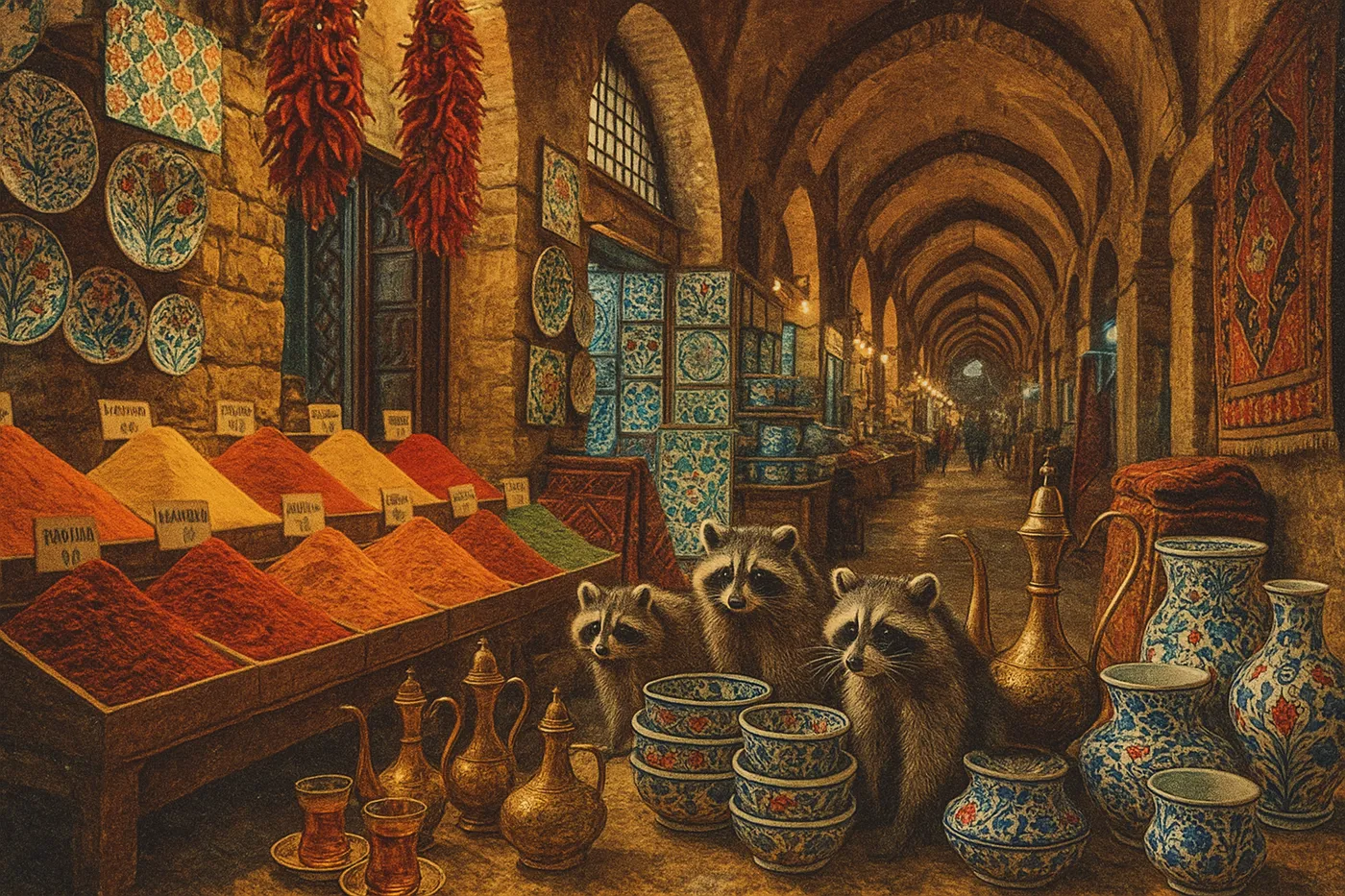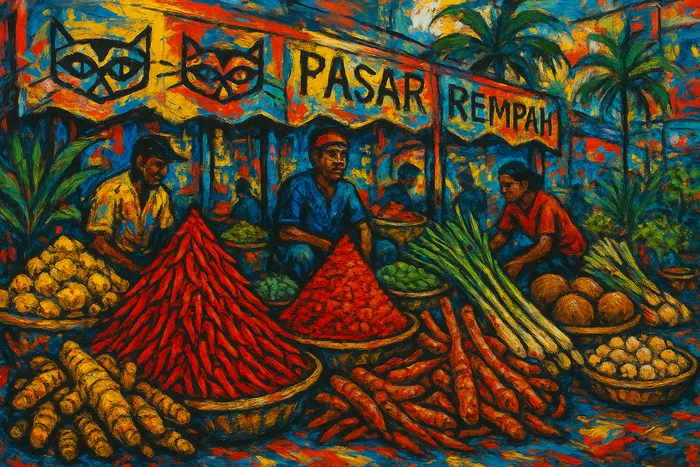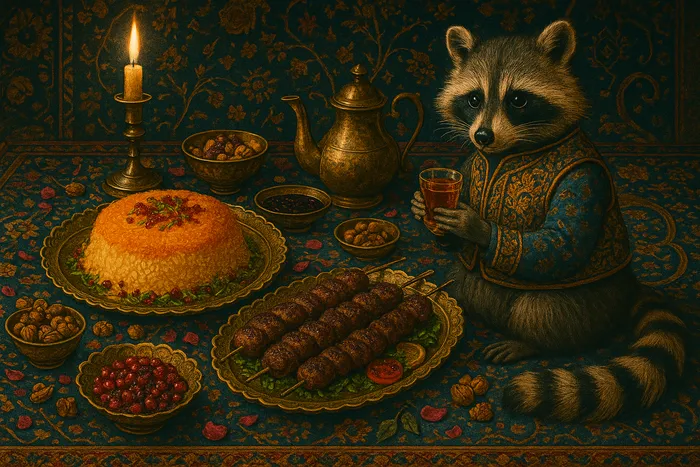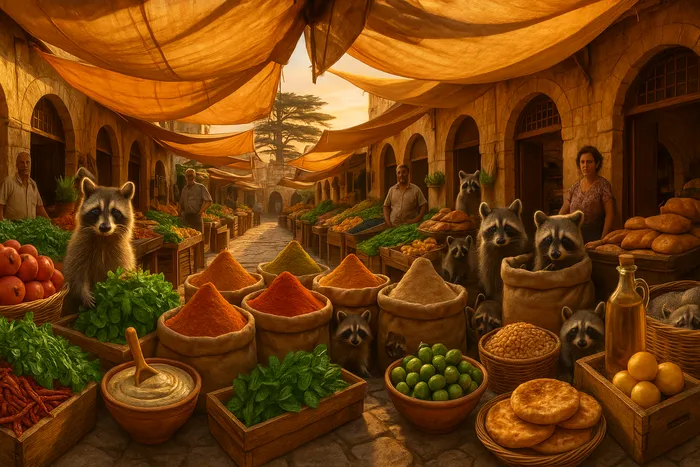
Turkish cuisine doesn't just bridge Europe and Asia—it marries them, creating something entirely new from the union. Walking through Istanbul's Grand Bazaar or along the Bosphorus, you taste this geographical reality in every dish: Ottoman palace sophistication meets Anatolian peasant wisdom, Mediterranean freshness mingles with Central Asian spices, and the result is a cuisine that feels both exotic and familiar.
Turkey's food tells the story of empires, trade routes, and cultural exchange. This is cooking that absorbed influences from across three continents and made them distinctly Turkish, creating a culinary identity that's confident enough to claim dishes like kebabs, baklava, and Turkish delight as its own.
Ottoman Legacy: Palace to People
The Ottoman Empire's vast reach created a cuisine of remarkable diversity. Palace kitchens developed elaborate dishes with complex spice blends, while the empire's reach from the Balkans to the Middle East brought techniques and ingredients that merged into something uniquely Turkish.
Turkish breakfast exemplifies this complexity—a spread that can include cheese, olives, tomatoes, cucumber, honey, jam, börek, and çay (Turkish tea). It's not just a meal but a social institution where families gather to start the day properly, with conversation flowing as freely as the tea.
The meze tradition reflects Ottoman hospitality at its finest. Small plates of Turkish Cacik, stuffed grape leaves, various cheeses, and pickled vegetables create a leisurely dining experience where the meal becomes secondary to the company and conversation.
Regional Diversity: More Than Istanbul
Turkey's diverse geography creates distinct regional cuisines. The Black Sea coast excels at fish and corn-based dishes, influenced by the region's lush, rainy climate. Anchovy season turns the coastal towns into festivals of small, silver fish prepared dozens of ways.
Central Anatolia, the heart of Turkey, produces hearty dishes suited to harsh winters and nomadic traditions. Here, mantı (Turkish dumplings) and various kebabs showcase the region's wheat cultivation and sheep herding heritage.
The Mediterranean and Aegean coasts embrace olive oil, fresh vegetables, and seafood in ways that reflect both Turkish tradition and proximity to Greek islands. The cooking is lighter here, with an emphasis on fresh herbs and simple preparations that let ingredients shine.
Street Food Culture: Democracy on a Plate
Turkish street food operates on the principle that good food should be accessible to everyone. Döner kebab, now global fast food, originated as a way to make grilled meat portable and affordable. The sight of meat turning on vertical spits has become synonymous with Turkish street corners worldwide.
Simit vendors work Istanbul's streets like mobile bakeries, carrying rings of sesame-covered bread that serve as Turkey's answer to bagels. Fish sandwiches grilled on boats moored at Galata Bridge turn the simplest ingredients—bread, fish, onion, lettuce—into something that captures the essence of Istanbul's maritime culture.
Lahmacun, thin dough topped with spiced meat and vegetables, gets rolled up with fresh herbs and eaten by hand. It's Turkish fast food that predates modern concepts of quick eating by centuries.
Tea Culture: The Social Lubricant
Turkish tea culture deserves its own category. Çay isn't just a beverage—it's social infrastructure. Served in small tulip-shaped glasses, Turkish tea accompanies every social interaction, from business meetings to casual conversations.
Tea houses serve as community centers where men gather to play backgammon, discuss politics, and watch football. The ritual of preparing and serving tea—from the double teapot system to the precise sugar-to-tea ratio—reflects Turkey's attention to hospitality details.
Turkish coffee, despite its name recognition, plays a more ceremonial role. UNESCO-recognized for its cultural importance, Turkish coffee preparation and serving represents a courtship ritual and symbol of hospitality that goes far beyond caffeine delivery.
Spice Markets and Flavor Profiles
Istanbul's Spice Bazaar reveals Turkey's position on ancient trade routes. Sumac adds tartness without heat, Turkish red pepper flakes (pul biber) provide warmth without overwhelming, and za'atar blends create complexity that enhances rather than masks other flavors.
Turkish cuisine uses spices with restraint compared to some of its neighbors. The goal is balance and harmony rather than heat or intensity. Even dishes that appear simple often contain carefully calibrated spice blends that took generations to perfect.
Pomegranate molasses, tahini, and various pickled vegetables add layers of flavor that make Turkish cuisine simultaneously comforting and sophisticated.
Bread and Pastry Traditions
Turkish bread culture extends far beyond the famous simit. Pide, often called Turkish pizza, serves as both vehicle and destination—the bread itself is as important as what tops it. Regional variations reflect local ingredients and preferences, from cheese and egg combinations to elaborate meat toppings.
Börek, layered pastries filled with cheese, spinach, or meat, showcase Turkish mastery of phyllo-like doughs. Whether baked in pans or rolled into individual servings, börek represents comfort food that's both homely and elegant.
Turkish desserts often involve dough techniques that require skill and patience. Baklava, Turkish delight, and various syrup-soaked pastries demonstrate the Ottoman sweet tooth and the technical precision Turkish bakers developed over centuries.
Modern Turkish Cuisine
Contemporary Turkish chefs are rediscovering regional dishes and traditional techniques while incorporating modern presentations. They're proving that Turkish cuisine has depths beyond the kebabs and baklava that most international diners know.
This modern movement respects tradition while embracing innovation. Chefs are foraging for wild herbs in Anatolian mountains, reviving forgotten Ottoman palace recipes, and creating dishes that honor Turkey's culinary heritage while speaking to contemporary palates.
The Social Aspect: Food as Community
Turkish dining emphasizes sharing and community. Meals are rarely rushed, and the concept of eating alone is somewhat foreign. Whether it's a family gathering around a weekend breakfast spread or friends sharing meze over rakı, Turkish food culture prioritizes the social aspects of eating.
This communal approach extends to food preparation. Families still gather to make dolma, roll börek, or prepare winter preserves. These cooking sessions serve as cultural transmission, where techniques and stories pass from generation to generation.
Istanbul: The Culinary Crossroads
Istanbul embodies Turkey's culinary complexity. Street vendors sell Syrian-influenced dishes steps away from restaurants serving Ottoman palace cuisine. Kurdish, Armenian, and Greek influences appear alongside traditional Turkish preparations, creating a food scene that reflects the city's cosmopolitan history.
The city's location on the Bosphorus means seafood traditions from both the Black Sea and Mediterranean appear on the same menus. This geographical advantage, combined with Istanbul's role as Turkey's cultural capital, makes it a microcosm of the entire country's culinary diversity.
Turkish cuisine offers something essential: the understanding that food can honor tradition while embracing change, that simplicity and sophistication aren't opposites, and that the best meals happen when good food brings people together. From the humblest Turkish Cacik to the most elaborate Ottoman feast, Turkish cooking demonstrates that bridging cultures doesn't mean compromising identity—it means creating something richer than any single tradition could produce alone.









